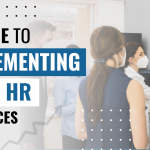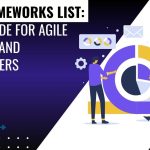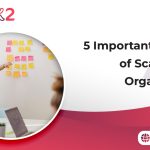Do you want a powerful formula that will align your goals and transform your vision into reality? Choose from different Scaling Agile Frameworks and get to know which ones work best for your organisation.
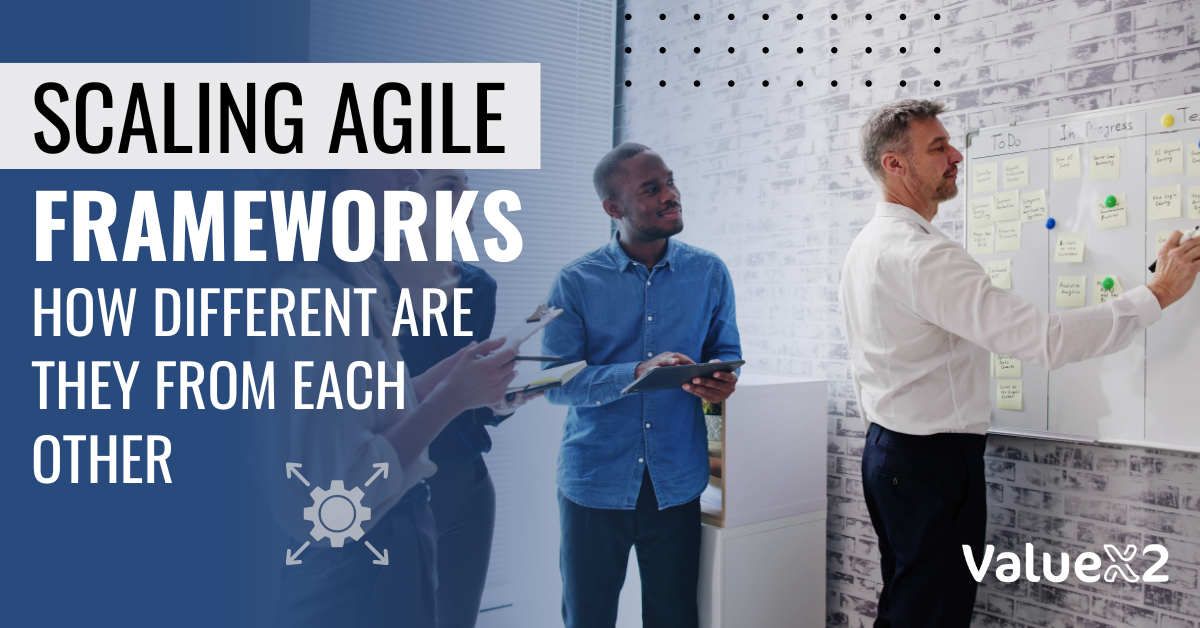
Agile has now established itself in the industry. In 2024-25, every organisation is trying to become better, and every individual is also looking for improvement. This is where Agile frameworks strike they have gone beyond expectations, and the results are just exceptional. organisations in almost every industry have begun to transform their workflow by looking into Scaling Agile Frameworks, why you ask? Because it guarantees the most efficient outcomes, along with one of the most important considerations, it gives customer-centric results. Now the Scaling Agile Frameworks, have many different frameworks within, and every framework promises something different. Now let’s find out which one is well suited for you, and your organisation’s needs. We go deeply into the popular frameworks, such as Scaled Agile Framework (SAFe®) and Large-Scale Scrum (LeSS), giving you the most comprehensive comparison of Scaling Agile Frameworks to make the right decisions. For the working professional who would find it challenging to pursue Agile certification, we will discuss why Scaling Agile Frameworks matters, what it includes, why is it the best fit for leaders and more.
CHECK OUT SAFe CERTIFICATION COURSES OFFERED BY VALUEX2
Why Scaling Agile Frameworks Matter
Agile methodologies, such as Scrum and Kanban, easily scale for small teams. However, for large organisations, the scaling of Agile poses many challenges, such as:
- Coordinating multiple teams
- Aligning with technical and business strategies
- Ensuring consistent delivery across geographies
That is where different Agile Scaling Frameworks come into action and provide an implementation of Agile practices across the enterprise with a structured approach. They attempt to maintain the same Agile core values in managing complex large-scale operations, such as collaboration, agility, and customer focus.
1. Scaled Agile Framework (SAFe®): An End-to-End Solution
SAFe is one of the most widely used frameworks that scales agile in large enterprises through robust practices, tools, and principles. SAFe focuses on alignment, collaboration, and delivery at all scales as built on Lean-Agile principles.
- Four Key Components of SAFe: It is available in very robust variations as this completely depends on organisational size and complexity:
- Essential SAFe
- Large Solution SAFe
- Portfolio SAFe
- Full SAFe
- Lean-Agile Principles: Lean thinking, Agile development, DevOps practices and systems thinking form the basis of SAFe.
- Program Increment (PI) Planning: An important element that harmonises teams towards a common mission through structured planning and feedback loops.
- Roles and Responsibilities: SAFe defines what each role would be-clearly putting accountability and focus behind the Release Train Engineer (RTE), Solution Architect and Product Owner.
Why SAFe® Stands Out
- Broad Scope of Support: SAFe® covers any span from team-level coordination to enterprise-wide strategic alignment.
- Built for Scalability: It can easily cater for hundreds of Agile teams in large enterprises too.
ValueX2 is an SAFe® Silver Partner that provides accredited courses so organisations can Implement and Master SAFe®
Scaling usually wins the race for SAFe® as it always turns out to be flexible and effective.
2. Large-Scale Scrum (LeSS): Keeping It Simple
Large Scale Scrum, LeSS adopts the principles of Scrum to bigger teams without losing its simplicity. This is mainly popular with organisations that support the principle of minimalism and collaboration through direct contact.
Main Components of LeSS
Two Frameworks:
- LeSS (up to eight teams).
- LeSS Huge (more than eight teams).
Scrum Core Values: Empirical process control, self-managed teams, and iterative delivery.
Simplified Governance: Unlike SAFe®, LeSS does not use hierarchical structures but relies on clarity and continuous improvement.
Benefits of LeSS
- Easy: It does not come with the baggage of rigid frameworks that always add complexity for smaller-sized enterprises.
- Cost Effective: Less number of roles and overheads mean less cost.
- Customer Centric: Focuses on direct feedback from the customer.
However, LeSS is not suitable for large, geographically distributed organisations or for those who require extensive governance and portfolio management.
3. Disciplined Agile (DA): Tailoring to Your Needs
Disciplined Agile (DA) provides the toolbox approach and gives the principle that “context counts”. It enables organisations to tailor their Agile processes according to individual necessities.
DA Characteristics
- Goal-Driven Framework: Focuses on accomplishing business goals through such tailored practices.
- People-Centric: Encourages both leadership and team empowerment
- Diverse Toolkit: Agile, Lean, as well as traditional approaches
DA’s flexibility is its biggest strength but needs high expertise for good implementation.
4. Nexus: Scaling Scrum for Medium-Sized Teams
Nexus is a lightweight framework by Scrum.org that extends Scrum to scale for 3-9 teams working on the same product.
What Nexus Offers
- Focus on Integration: Practice includes management of cross-team dependencies
- Easy to Adopt: Practices carry minimal deviation from fundamental Scrum principles
Medium scaling is useful, but Nexus lacks attention from the enterprise level of SAFe®.
Comparing Scaling Agile Frameworks
| Framework | Best For | Positives | Negatives |
| SAFe® | Large and complex enterprises | Inclusive, flexible, enterprise-wide governance | Requires experience and training |
| LeSS | Small organisations with simple values | Lightweight, customer-centric | Limited to small sizes |
| Disciplined Agile | Organisational customisations | Flexible, goal-oriented | Complex in implementation |
| Nexus | Scaling Scrum for one product on a team | Integration-focused, aligns with Scrum | Scope is narrow |
CHECK OUT SAFe CERTIFICATION COURSES OFFERED BY VALUEX2
How Do You Handle Adoption and Training in Scaling Agile Frameworks?
Scaled Agile Framework: SAFe has a fully developed adoption and training curriculum starting with base courses to advanced certifications. This training is all about team members or individuals being prepared to take up different roles when working with the SAFe framework.
Large-Scale Scrum – LeSS encourages incremental organizational adoption of Scrum practices, and such an approach might make the change less painful, generating less resistance to it. It allows teams to scale Scrum practices only at a speed supported by processes. LeSS also provides certification programs for things like Certified LeSS Practitioner and Certified LeSS for Executives. The target of these certifications is knowledge in understanding of the principles of LeSS and how to apply them at scale.
81% of agile teams report using some version of Scrum, including Scrumban or a hybrid Scrum model.
What Challenges and Considerations Arise in Major Scaling Agile Frameworks?
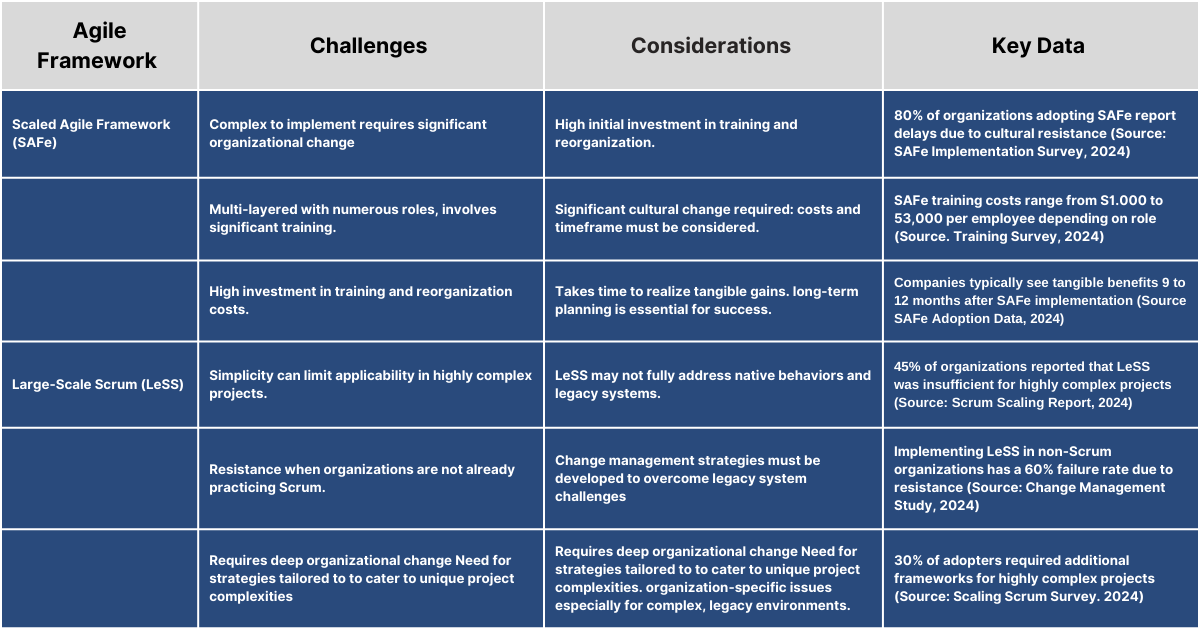
Scaled Agile Framework (SAFe): This can be complex to implement, and there can be a need for quite significant organizational change. It is multi-layered, with multiple roles that usually involve a considerable investment in training and cultural change. The first investment in training and reorganization is high, and organizations must consider the costs of SAFe implementation and a timeframe to realize tangible gains in the adoption of this framework.
Large-Scale Scrum (LeSS): Despite it being designed for Scaling Scrum practices for very large organizations, LeSS could still be bound by limits in the case of highly complex projects. The simplicity of the framework might not be able to cater completely to all the needs of such organizations. Implementing LeSS in organizations that are not practising Scrum can also face some resistance. Although LeSS is simple, it could also not cater to very deep, native behaviours and legacy systems that may require more developed strategies for change management.
What is a Step-by-Step Guide to Implementing a Scaling Agile Framework?
Comparing the different Scaling Agile Frameworks really makes one consider exactly how each framework addresses other criteria of Agile practices at scale.
- Scaled Agile Framework (SAFe): SAFe provides a well-defined framework with certain roles, ceremonies, and artefacts for enterprise-level projects. Besides, there are extensive training and certification programs that will help a project organization in effectively running the framework.
- Large-Scale Scrum (LeSS): In LeSS, the core of Scrum is maintained while it is implemented at scale. Due to its simplicity and clarity, LeSS fits easily in already existing Scrum contexts.
How Do Scaling Agile Frameworks Compare to Each Other?

Why SAFe® is the Best Solution?
SAFe® is the most comprehensive and widely embraced agile scaling framework among others. It enables organisations to retain strategic objectives while also becoming agile through its highly structured approach.
Benefits of SAFe®:
- Success Story: The popularity and adoption rate worldwide are indicative of its success.
- End-to-End Alignment: Connects business strategy with execution
- Scalability: Large organisations with distributed teams
- Certification from ValueX2: ValueX2 is a Silver SAFe Partner. The industry-leading, multiple instances of training programs are acknowledged by working professionals as well as the Agile leaders.
Which Scaling Agile Frameworks does ValueX2 offer?
ValueX2 is a SAFe Silver Partner. ValueX2 concentrates on the delivery of not only training to team members but also on providing leadership training for Agile transformation. The ValueX2 Scaling Agile Framework courses equip leaders with:
- Tools for agile-specific strategic planning.
- Cross-functional team collaboration techniques that bridge the functions.
- How to scale Agile in such a way so that it continues to focus on the customer.
Leadership development is pivotal for making scaling sustainable and of high value to organisations over the long term. A well-read leadership team often is the difference between an Agile transformation that delivers versus one that stalls.
By dedicating time to leadership development, organisations can unlock the full potential of the Scaled Agile Framework and other Agile methodologies. ValueX2 will become your partner to lead your organisation to a more Agile future.
How Scaling Agile Frameworks Can Help in Leadership?
Amongst these, one of the most crucial factors that facilitate Scaling Agile implementation of various scaling frameworks is strong leadership. SAFe® happens to be one of the most popular amongst them. Agile transformation is not an initiative at the team level; rather it requires leaders to get involved, align strategies, and facilitate a change culture.
Leadership Role in Scaling Agile Successfully
- Alignment of the organisation’s vision to Agile: Leaders ensure alignment of the organisation’s vision toward Agile. This helps distributed departments achieve shared business objectives.
- Supporting cultural change: As one enters into large-scale Agile implementation, the culture of traditional hierarchical management has to let go and adopt a collaborative or iterative approach to decision-making. The leader needs to support this cultural change.
- Investment in Learning: Leadership must invest in things like Agile training and certifications ensuring teams have the learning capability to succeed.
Leadership in SAFe
SAFe explicitly recognises the value of leadership through its Lean-Agile mindset. It also introduces some key roles, including:
- Business Owners: Leaders aligned and prioritised towards strategy.
- Lean-Agile Leaders: Champions who work towards delivering Lean principles and continuous improvement.
Leadership Strategies for Success
- Empower Teams: Give teams the power to make decisions within established guardrails.
- Encourage Continuous Improvement: Continuously reflect on Agile practices and processes in a process of improvement and evolution.
- Model Agile Behaviors: Leaders must demonstrate the Agile values of collaboration, transparency, and focus on value for the customer.
Conclusion
The right Scaling Agile Framework will depend upon the needs of your organisation. There are merits to LeSS, Nexus, and Disciplined Agile, but SAFe is often the most comprehensive and rich offering in this space. Partnering with ValueX2 means you get access to the best value SAFe training through expert trainers, equipping your teams to deliver value in the Agile era.
Frequently Asked Questions About Scaling Agile Frameworks
- Which Scaling Agile Framework is the most popular?
SAFe® is most popular because it is comprehensive and suits large-scale organisational needs.
- What is the difference between LeSS and SAFe®?
LeSS is all about simplicity and minimalism, whereas SAFe® provides enterprise-wide detailed scaling processes.
- Why prefer ValueX2 for your Agile certifications?
ValueX2 is a SAFe® Silver Partner with training and courses that make the professionals work-ready against real industry challenges.
- Can SAFe® be used by small-sized Organisations?
SAFe® is best suited for mid to large-sized businesses. For smaller organisations, the choice would be LeSS or Nexus frameworks.
- How do I get started with SAFe®?
Begin with foundational training like SAFe® Agilist certification through trusted partners like ValueX2.

Bhavna is an Agile Coach and Consultant with over a decade of experience in advisory, corporate finance, IT assurance, and operations at Big 4 and within the industry in the UK and India. She has recently been the CEO of a start-up where she implemented agile practices within HR, Marketing, and Product teams.
She is also a SAFe® Practice Consultant (SPC) and authorized instructor for ICAgile Agility in HR (ICP-AHR), Agility in Marketing (ICP-MKG), and Business Agility Foundations (ICP – BAF) training courses. She provides training for agile transformation to corporate, public, and private batches, as well as consulting for enterprise agile transformation.


